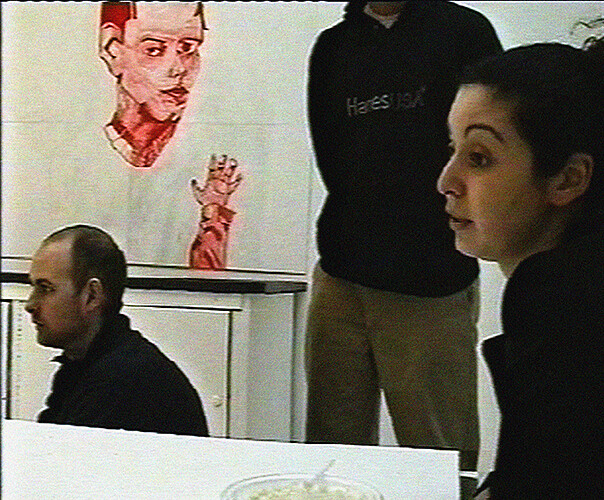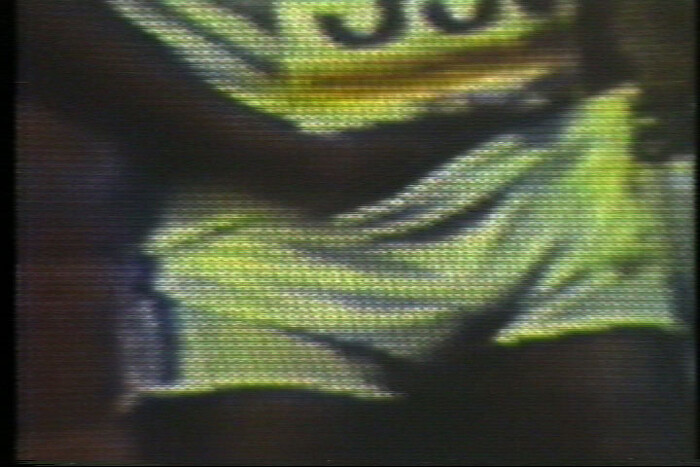Categories
Subjects
Authors
Artists
Venues
Locations
Calendar
Filter
Done
October 7, 2011 – Review
Keren Cytter’s “Video Art Manual”
Karen Archey

As in Keren Cytter’s previous work, “Video Art Manual” strings together clichéd, Freudian-tinged narratives with a bad case of ADHD. Comprising four videos and a series of peripheral drawings, “Video Art Manual” is the stuff masochistic art critics live for: as soon as one eye rolling-worthy moment passes, such as a misogynistic character announcing his unprecedented hatred of both ducks and women (they way the talk, the way they walk!), Cytter blasts off with another libidinal oddity, laboring her viewers to glean any sense of comprehension from her work.
Behind a black curtain cordoning off the rear of Zach Feuer’s Chelsea space are a cacophony of projections, ballads, and dramaturgies making up Cytter’s video efforts from the last two years, with one exception from 2002. The soundtrack to the exhibition’s title video blares a MIDI-version of the melody to Guns N’ Roses’s “November Rain,” which is interspersed with rapid-fire human speech. In the back gallery is Cytter’s Hottest Day of the Year, a piece from 2010 riffing off documentary-style filmmaking. In the first half, the video tracks the imaginary Anne-Marie Baptiste and her family from country to country amidst the early 20th century, while the second half confusingly centers around two …
July 9, 2010 – Review
Michel Auder’s "Keeping Busy: An Inaccurate Survey"
Media Farzin

Michel Auder’s current New York exhibition could be called “epic,” if his approach weren’t so far removed from any claims to grandeur. There are samplings from four decades of film and video, shown as single- and multi-screen installations, accompanied by film stills, polaroids, postcards, and the occasional rooster lamp. The show is divided among Chelsea galleries Zach Feuer and Newman Popiashvili, and Lower East Side non-profit Participant Inc., with a supplemental screening at Anthology Film Archives (and even a Los Angeles outpost at Volume2). There, is quite simply, too much to take in, unless you’re willing to slow down to the leisurely, attentive-yet-scattershot pace of Auder’s camera.
Since the late 60s, Auder’s medium has been video. His tapes are documents of a life obsessively viewed through the camera lens, making him a pioneer in an art form that wouldn’t be regularly exhibited in galleries until two decades later. He works in the tradition of cinema vérité, but his form is never merely diaristic. The art lies in the light touch of his editing, which extracts immediacy, absurdity or accidental drama from his daily encounters. Every representation of reality, Auder knows well, is in some sense a fiction—just as any survey of …